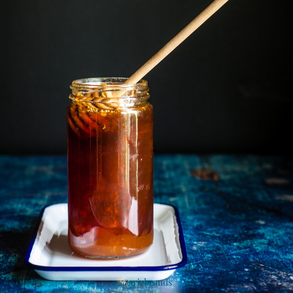September is significant for honey producers as it is the month that marks the end of the honey collection season for many beekeepers in the United States.
The story of honey is older than history itself. An 8,000-year-old cave painting in Spain depicts honey harvesting, and we know it's been used for food, medicine and more by cultures all over the world since. In fact, Archaeologists discovered honey comb in Egypt that had been buried with the pharaohs in their tombs, the honey was preserved and was still edible. Honey has been incredibly important to humans for as long as people have been around.
But honey isn't about humans. It's the natural product made from bees—one of our planet's most important animals.
While this is about honey we also love all the other goodies that our little fuzzy buzzing friends make, check them out below!

- The USDA estimates that 163,000,000 million pounds of honey is produced each year in the US.
- Honey Bees convert nectar from flowers into honey
- Honey is the primary source of carbohydrates for bees
- The color of honey typical varies due to the region it was gathered and the plant species from which the nectar came from.
- The crystallization seen in honey is a natural part of the aging process and doesn't effect the quality.


